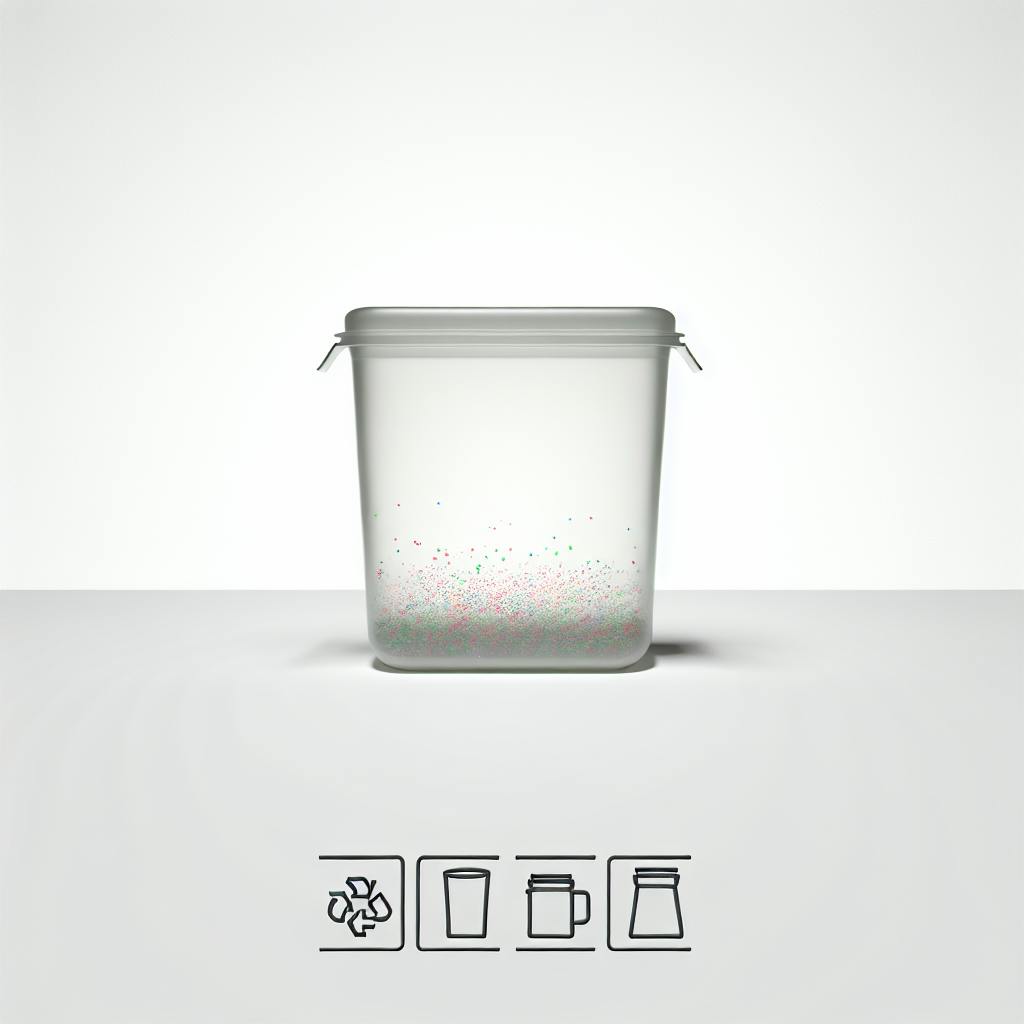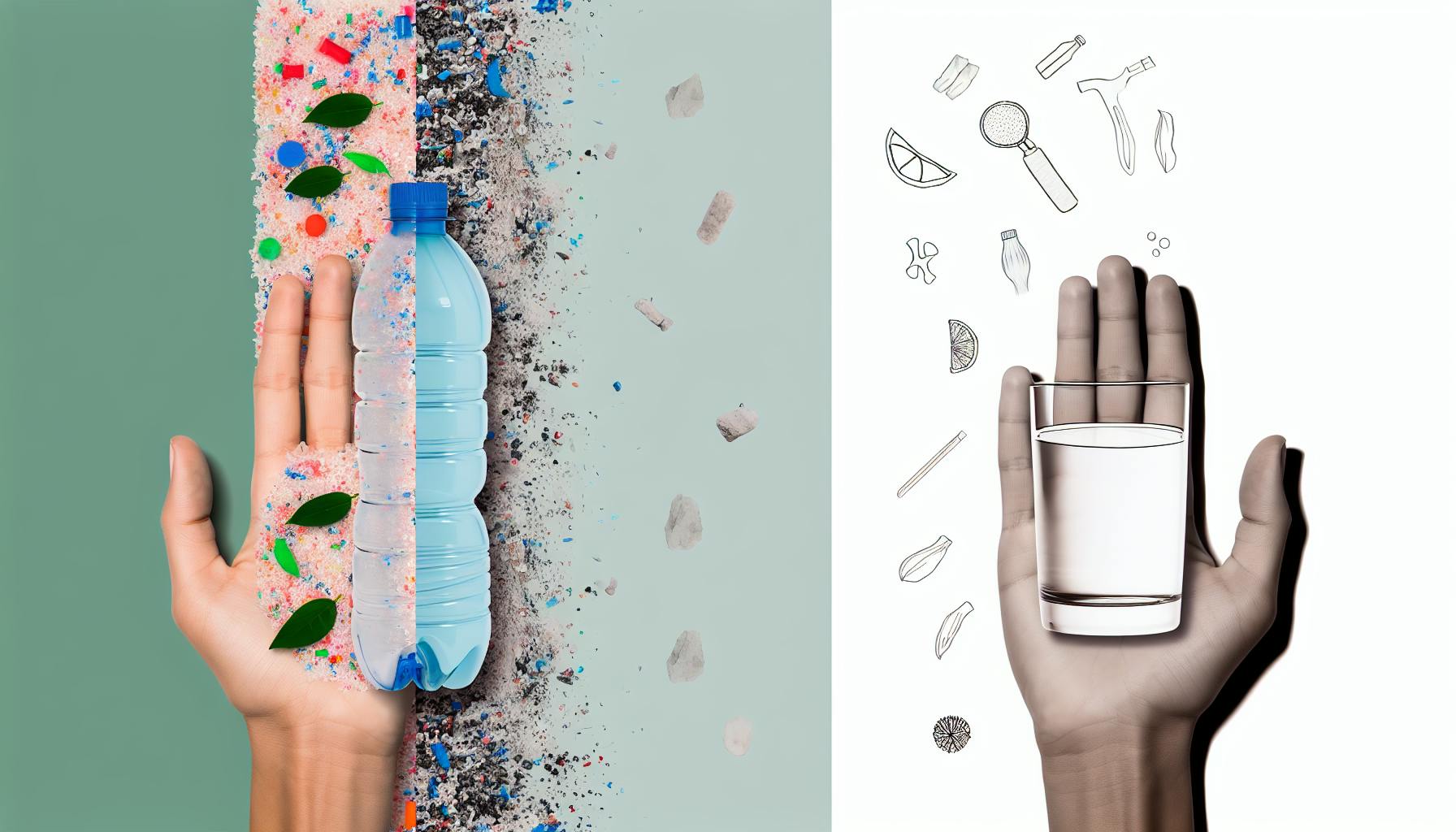Microplastics are tiny plastic particles (< 5mm) that have become a major environmental concern, polluting ecosystems worldwide. They can harm marine life, contaminate food chains, and pose risks to human health.
Microbial bioremediation offers a promising solution to degrade microplastics using microorganisms like bacteria and fungi that produce enzymes to break down plastic molecules. Key advantages include:
- Sustainable approach applicable in various environments
- Utilizes microbes' natural ability to decompose microplastics
- Potential to mitigate microplastic pollution on a large scale
However, challenges remain in scaling up the process, developing regulatory frameworks, addressing microplastic complexity, and overcoming contaminants that inhibit microbial activity.
Ongoing research focuses on:
- Genetic engineering for enhanced microbial degradation capabilities
- Discovering novel microbial strains for more efficient breakdown
- Emerging technologies like bio-membranes and advanced molecular tools
By collaborating among researchers, policymakers, and communities, microbial bioremediation could pave the way for a future with significantly reduced microplastic pollution, protecting our planet for generations to come.
Key Microbes for Microplastic Degradation
| Type | Examples |
|---|---|
| Bacteria | Ideonella sakaiensis, Vibrio natriegens, Streptomyces, Jonesia |
| Fungi | Aspergillus terreus, Fusarium oxysporum, Penicillium |
| Algae | Chlorella, Scenedesmus |
Understanding Microplastic Pollutants
Microplastic pollutants are a widespread environmental concern, affecting ecosystems and human health. To combat this issue, it's crucial to understand the nature of microplastics, their pathways into the environment, and their devastating impacts.
What are Microplastics?
Microplastics are small plastic particles measuring less than 5 millimeters in size. They can originate from various sources, including:
| Source | Description |
|---|---|
| Microbeads | Intentionally added to personal care products, such as face wash and toothpaste, for exfoliating purposes. |
| Fragments | Broken down from larger plastic items, like bottles, bags, and microfibers from clothing. |
| Synthetic fibers | Released during the washing of synthetic clothing, like polyester and nylon. |
How Microplastics Spread
Microplastics can enter the environment through multiple pathways, including:
- Waterways: Through wastewater treatment plants, storm drains, and agricultural runoff.
- Air currents: Via atmospheric deposition, where microplastics are transported through the air and deposited on land and water surfaces.
- Food chain: Microplastics are ingested by small animals, which are then consumed by larger animals, potentially leading to human consumption.
Impacts on the Environment and Health
The consequences of microplastic pollution are far-reaching and devastating:
| Impact | Description |
|---|---|
| Environmental harm | Microplastics can entangle, suffocate, or be ingested by marine life, leading to physical harm and even death. |
| Human health risks | Exposure to microplastics has been linked to inflammation, immune system disruption, and endocrine disruption, with potential long-term consequences for human health. |
| Food chain contamination | Microplastics can accumulate in the food chain, potentially leading to human consumption and exposure to toxic chemicals and heavy metals. |
Understanding the complexities of microplastic pollution is crucial for developing effective remediation strategies, such as microbial bioremediation, to mitigate the environmental and health impacts of these pervasive pollutants.
Microbes that Degrade Microplastics
Microbes are a promising solution in the fight against microplastic pollution. These tiny organisms can break down microplastics into smaller, more manageable components, reducing their environmental impact.
How Microbes Break Down Microplastics
Microbes use various mechanisms to break down microplastics, including:
- Enzymatic decomposition: Microbes produce enzymes that can degrade microplastics.
- Biofilm formation: Microbes create a complex community that works together to break down microplastics.
For example, certain bacteria like Ideonella sakaiensis can produce enzymes that break down polyethylene terephthalate (PET), a common type of microplastic. Fungi like Aspergillus terreus can also produce enzymes that degrade polyurethane, another type of microplastic.
Key Microbes for Bioremediation
Several types of microorganisms have been identified as having the potential to degrade microplastics. These include:
| Type of Microbe | Examples |
|---|---|
| Bacteria | Ideonella sakaiensis, Vibrio natriegens, Streptomyces, Jonesia |
| Fungi | Aspergillus terreus, Fusarium oxysporum, Penicillium |
| Algae | Chlorella, Scenedesmus |
These microorganisms have the potential to be used in bioremediation strategies to clean up microplastic pollution in various environments.
By harnessing the power of microbes, we can develop effective and sustainable solutions to mitigate the environmental impacts of microplastic pollution.
Applying Microbial Bioremediation
Microbial bioremediation is a promising approach to mitigate microplastic pollution in various environments. To apply this method effectively, it's essential to understand the practical steps involved in establishing microbial bioremediation projects.
Choosing the Right Microbes
Selecting the most suitable microbial strains for microplastic degradation is crucial for successful bioremediation. Consider the following factors when choosing microbes:
| Factor | Description |
|---|---|
| Plastic type | Different microorganisms are effective against specific types of microplastics. |
| Environment | Microbes adapted to specific environments, such as aquatic or terrestrial ecosystems, are more likely to thrive and effectively degrade microplastics. |
| Temperature and pH tolerance | Microbes that can tolerate a wide range of temperatures and pH levels are more likely to survive and degrade microplastics in diverse environments. |
Setting Up Bioremediation Conditions
To support and enhance microbial bioremediation processes, prepare the ideal environmental conditions:
| Condition | Description |
|---|---|
| Nutrient availability | Provide necessary nutrients, such as carbon and nitrogen sources, to support microbial growth and activity. |
| Temperature and pH control | Maintain optimal temperature and pH levels that support microbial growth and microplastic degradation. |
| Oxygen availability | Ensure sufficient oxygen levels to support aerobic microbial bioremediation processes. |
Monitoring and Adjusting the Process
Regularly monitor and maintain the bioremediation process to ensure its effectiveness:
1. Track degradation rates: Monitor the rate of microplastic degradation to adjust the bioremediation process as needed.
2. Microbial health monitoring: Regularly assess microbial health and adjust conditions to maintain optimal microbial activity.
3. Process optimization: Continuously evaluate and optimize the bioremediation process to improve its efficiency and effectiveness.
By following these practical steps, microbial bioremediation can be effectively applied to mitigate microplastic pollution in various environments, contributing to a cleaner and healthier ecosystem.
sbb-itb-1dc3f59
Challenges and Future Prospects
Microbial bioremediation is a promising approach to mitigate microplastic pollution, but it's not without its challenges. Several hurdles need to be overcome to ensure the successful implementation of this innovative solution.
Overcoming Bioremediation Challenges
Scalability: One of the significant challenges is scaling up the process while maintaining its efficacy.
Regulatory frameworks: Standardization is necessary to ensure the safe and effective use of this technology.
Microplastic complexity: Microplastics are composed of various polymers, each with its unique properties, making it difficult to develop a single, effective degradation strategy.
Contaminants: The presence of contaminants, such as heavy metals, can inhibit microbial activity, reducing the effectiveness of bioremediation.
Advances in Microbial Bioremediation
Despite these challenges, ongoing research and advances in microbial bioremediation are addressing these issues.
Genetic engineering: Developing microbial strains with enhanced degradation capabilities.
Novel microbial strains: Discovering new microbial strains that can degrade microplastics more efficiently and effectively.
Emerging technologies: Developing bio-membrane and advanced molecular technologies to support microbial bioremediation.
The future of microbial bioremediation looks promising, with ongoing research and innovation aimed at overcoming the challenges and enhancing the efficacy of this innovative solution.
Conclusion
Microbial bioremediation is a promising solution to combat microplastic pollution. By using microbes, we can break down microplastics and reduce their impact on the environment and human health.
Challenges Ahead
While microbial bioremediation shows great potential, there are still challenges to overcome:
| Challenge | Description |
|---|---|
| Scalability | Scaling up the process while maintaining its efficacy |
| Regulatory frameworks | Standardizing the use of this technology |
| Microplastic complexity | Developing a single, effective degradation strategy for various polymers |
| Contaminants | Overcoming the presence of contaminants that inhibit microbial activity |
Moving Forward
Despite these challenges, ongoing research and advances in microbial bioremediation are addressing these issues. It is essential to collaborate among researchers, policymakers, and communities to ensure the successful implementation of microbial bioremediation strategies.
By working together, we can create a sustainable future where microplastic pollution is significantly reduced, and our planet is protected for generations to come. The potential of microbes in mitigating microplastic pollution is vast, and it is our collective responsibility to continue exploring and developing this innovative solution.
FAQs
Can bacteria destroy microplastics?
Yes, some bacteria can break down microplastics. For example, researchers have genetically engineered a marine microorganism to break down plastic in saltwater. Additionally, some naturally occurring lake bacteria can grow faster and more efficiently on the remains of plastic bags rather than on natural matter like leaves and twigs.
Here are some key points to note:
| Microbe | Ability |
|---|---|
| Genetically engineered marine microorganism | Breaks down polyethylene terephthalate (PET) in saltwater |
| Naturally occurring lake bacteria | Grows faster on plastic bag remains than on natural matter |
While microbial bioremediation shows promise, there are still challenges to overcome. These include:
| Challenge | Description |
|---|---|
| Scalability | Scaling up the process while maintaining its efficacy |
| Regulatory frameworks | Standardizing the use of this technology |
| Microplastic complexity | Developing a single, effective degradation strategy for various polymers |
| Contaminants | Overcoming the presence of contaminants that inhibit microbial activity |
Ongoing research and advances in microbial bioremediation are addressing these issues. It is essential to collaborate among researchers, policymakers, and communities to ensure the successful implementation of microbial bioremediation strategies.


